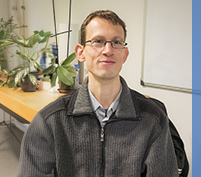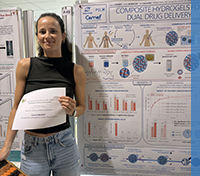PhD defence of Joe Khalil
22 November 2022
Joe Khalil will defend his PhD in Computational Mathematics, High Performance Computing and Data on Nov. 22, 22.
"Modeling fluid solid coupling with residual and thermoelastoplastic stresses analysis and optimization"

Joe Khalil conducted his PhD work in the CFL team under the supervision of Elie Hachem and Elisabeth Massoni. He will defend his PhD in Computational Mathematics, High Performance Computing and Data, on November 22, 22 in front of the following jury:
– Mr Julien Bruchon, Mines Saint Etienne, reviewer
– Mr Chady Ghnatios, Arts et Métiers Paris, reviewer
– Mrs Chantal David, SC&C
– Mr Lukasz Madej, AGH University of Science and Technology, Cracovie, Pologne
– Mr Elie Hachem, CEMEF Mines Paris – PSL
– Mrs Elisabeth Massoni, CEMEF Mines Paris – PSL
Abstract:
Quenching is a very important cooling process adopted nowadays by most of the industries, in particular automotive, aerospace and nuclear industries. The importance of this process comes from its ability to control the microstructure, to have better thermal properties as hardness and yield strength, and to release residual stresses. Nevertheless, it is a very complex process since it includes several physical phenomena on both the fluid (quenchant) and the solid. On the fluid level, because of the direct contact with a hot surface, the fluid will evaporate and reach the boiling point. On the solid level it exists stresses, deformations that changes the piece shape, and phase transformation which will generate latent heat. A boiling and evaporation was used to simulate what is happening in the surrounding of the solid. The importance of this model comes with its ability to give a real description of the heat transfer happening between the solid and the fluid. The temperature change in the solid will affect both the phase transformation and the mechanical response of the piece. In this project, a hybrid model is developed to solve the boiling and evaporation, at the same time phase transformation parameters and the mechanical response. In a Fluid-Solid domain, Navier-Stokes coupled with the heat equation is solved to give a temperature distribution in the solid. In a Solid domain only, the phase transformation parameters along with the stresses and deformations, using a thermo-elasto-plastic solver, are calculated based on the temperature distribution transported from the Fluid-Solid domain. The novelty of this model is its ability to work on two different domains simultaneously, and to give a better resolution on each domain, in addition to its completeness to simulate all the physics happening in the quenching process.
Keywords: fluid solid coupling, modeling, residual stresses, thermoelastoplastic stresses








